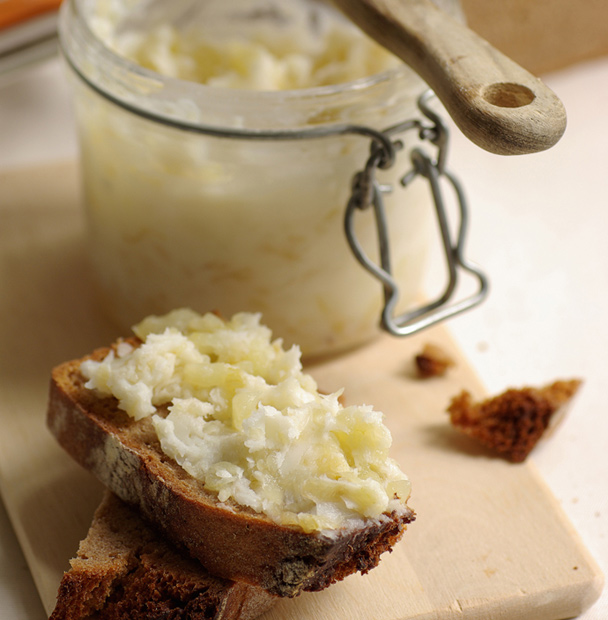In all the uproar over Paula Deen cashing in on her diabetes with a drug deal, one ingredient has gotten unfairly trashed. Countless headline and opinion writers have been throwing around the word lard as if it were a bad thing. But kitchen cognoscenti these days understand what cooks and bakers did a century ago B.C. (Before Crisco): The other white fat is infinitely better than the product manufactured and marketed to replace it.
Not only does lard produce superior pie crusts, crispier fried chicken, and crunchier cookies than vegetable shortenings like Crisco, which was introduced by Procter & Gamble in 1911, but its fat is mostly monounsaturated, like olive oil’s. Sourced properly (ideally from a farmers’ market), or made from scratch, lard is the ultimate natural food.
And whatever the butter-guzzling Deen was peddling, lard did nothing to earn such scorn. If anything is to blame for the diabetes epidemic, it would not be an ingredient that fell so out of favor that NPR’s Planet Money recently devoted an episode to “Who killed lard?” Last time I looked, fast food and soda contained no lard.
As it turns out, that recent report of its death was premature. Lard has gone through decades of shame thanks to heavy marketing of the unnatural alternative and also to what I call nutrition nuttiness—in the fat-fearing ’90s even olive oil came under siege. But now this time-proven ingredient is on the ascendancy in a nose-to-tail world, where every part of the heritage pig has value. More and more restaurants and bakeries are not just using lard but bragging about it, and more home cooks are coming around, too. In April they will even have a fresh cookbook to try: Lard: The Lost Art of Cooking with Your Grandmother’s Secret Ingredient from the editors of Grit magazine, has recipes for everything from predictable pie to potato chips and brownies.
Steven Gedra, chef and co-owner of Bistro Europa in Buffalo, actually serves house-rendered lard instead of butter with his bread basket. He learned to make it in Italy from the Tuscan celebrity butcher Dario Cecchini, seasoning it with lemon zest, red wine vinegar, salt, and black pepper, and dubbing it “burro del Chianti” after Cecchini’s version. Gedra admits, “We kind of force it on our clientele,” but adds: “It’s like with kids—they think they don’t like it and then they try it. You gotta educate ’em.” Gedra’s wife and co-owner, Ellen, has an easier job using lard in her bread and pie doughs. Like more and more restaurants, theirs brings in a pig every other week and makes the most of it, even selling the roasted head.
Paul Fehribach, executive chef and co-owner of Big Jones in Chicago, says he’s built a following for his flaky biscuits and pies made with lard. At first he was only rendering lard in-house “to be true in our whole-animal commitment,” he says, but now he has to buy extra to meet the demand. Asked how his diners deal, he shrugs: “I’ve been very outspoken about both the culinary and health benefits of lard in particular and whole-hog cooking in general, so I think our core client base has been relatively enthusiastic.”
Gwin Grimes, owner of Artisan Baking Co. in Fort Worth, Texas, also uses lard that she renders herself, and many customers now actually ask to be certain they’re getting pies with lard-based crusts rather than those made with butter or vegan shortening.
Nathan Sears, chef du cuisine of Vie in Chicago—and another proponent of whole-animal cookery—renders lard to cook vegetables with instead of butter, which, he notes, has more saturated fat. And at Americano in Cleveland, co-owner Cole Davis says the deep-fryer is filled with lard because “we believe it is the healthiest and most durable” fat for frites.
Lard is still saddled with a debased name (although when you add one extra letter it sounds more seductive—lardo is everywhere thanks to the salumi craze). No wonder some chefs say it sells better as “pork fat.”



 Pinterest
Pinterest


